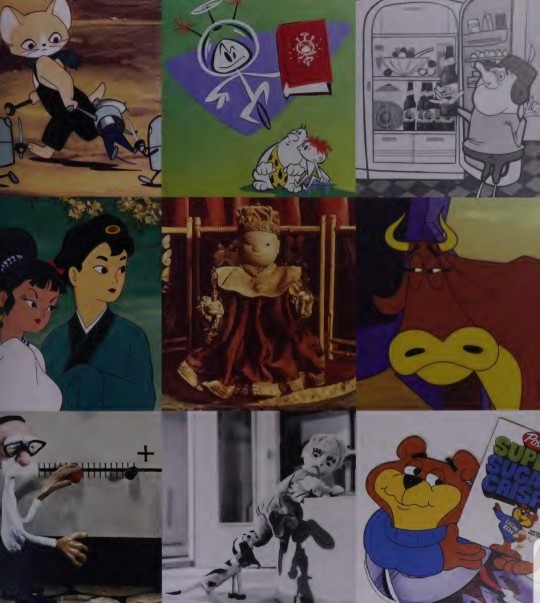#Bruno Bozzetto
Text

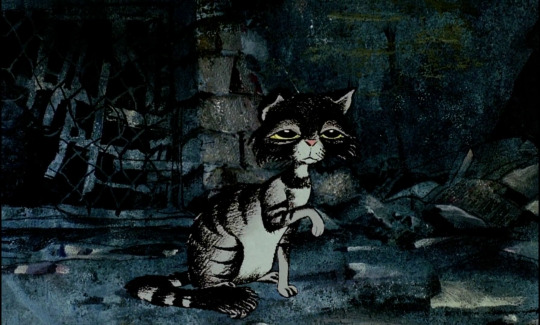


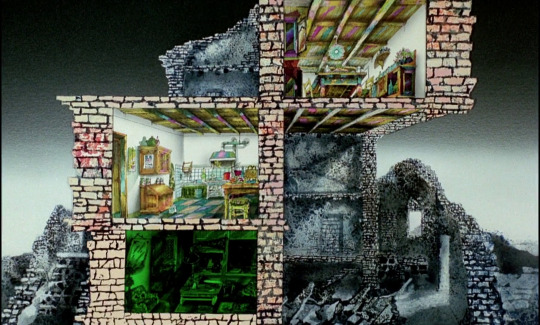
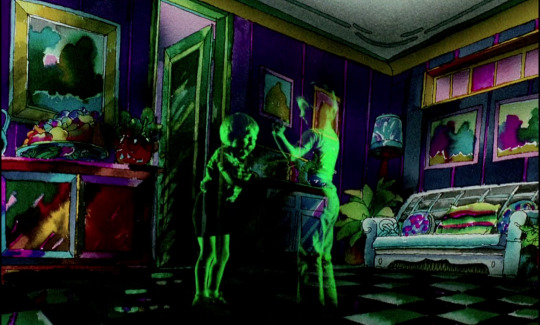
Allegro Non Troppo (1976)
#allegro non troppo#animation#animated film#musical#cat#italian cinema#movie screencaps#film screencaps#my screenshots#my screencaps#Bruno Bozzetto
30 notes
·
View notes
Video
West and Soda
Director: Bruno Bozzetto | Italy, 1965
54 notes
·
View notes
Text
Allegro non troppo (1976)
A film director comes up with a great idea of making a animated film to classical music but realises that some other company has done this before. To make this movie stand out he decided to have the orchestra made entirely of elderly woman and animated by a cartoonist locked in a dungeon.

The first segment is of a lonely satyr looking for love. Probably my least favourite of the bunch. I can't feel bad for the satyr since he's kind of a creep and is honestly boring compare to the later pieces.

The second segment is of a caveman creates a house but the rest of the caveman copies him so the first caveman feels the needs to constantly one up them. This is the shortest and most fast paced bit in the movie it's good for as a warm up to the other segments.

The third piece is basically your 'Rite of Spring' of Allegro non troppo except it also shows off evolution. The one is great while the first two didn't really match the music this one works very well with it. It just looks great, I love the grainy aesthetic and how weird some of these creatures look.

This one is definitely my favourite of the group with the evolution one being a close second. A stray cat lives in a abandoned building dreaming of the kind of home they could have. This is easily the most emotional part in the movie and works really well with the music they chose. It's in the same sketchy style as the last piece which I love. The cat feels so alive and moves very fluidly. If you don't want to watch this movie I'd still suggest watching these two segments as they are the best this movie has to offer.
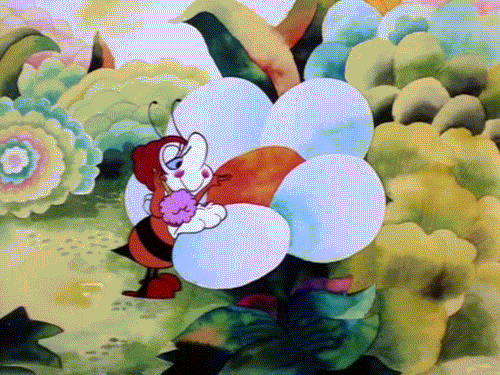
The next one is of a bee just wanting to have her dinner in peace but is constantly interrupted by a couple of humans. They had a lot of fun with the perspective and is the comedy portion of the movie. It's fun not much else to say.

The last bit is a retelling of Adum and Eve but where the snake eats the apple instead. The poor snake experiences chaotic hallucinations of the future. I love the design of the snake he's really cute looking while still coming off as sneaky.
This was a fun time. It's very tongue and cheek while not being too cynical. The live action bits are pretty entertaining. Check it out if you're interested.
The list
#animated movies#animation#every animated movie#animation history#1970s#70s films#1976#allegro non troppo#bruno bozzetto#italian animation
6 notes
·
View notes
Text
youtube
I saw this when I was a small child and it stuck with me like a nail into wood, it still blows me away with how smooth and imaginative it is with its creature design and animation. I sincerely hope it gets more famous in the international scene, I barely ever hear about this movie (Allegro Non Troppo) even when talking specifically about italian animation.
@bogleech it feels like you might like this style.
#allegro non troppo#bruno bozzetto#creature design#cool creatures#bolero#classical music#animation#Youtube
5 notes
·
View notes
Text
IDEA NOT FIXED
“…Thy body permanent, / The body lurking there within thy body, / The only purport of the form thou art, the real I myself, / An image, an eidólon…” —Walt Whitman
A stereotypical modernist-bohemian “arteest” paints from a nude model. 1) He moves from behind the easel towards her. The chase is on. 2) He tries to grab one of her “lines” and it breaks; she escapes. 3) He tries again with a bear…

View On WordPress
#acceptance#art#artist&039;s model#artists#betrayal#Bruno Bozzetto#capitalism#deception#drawing from life#eidolon#gilot#idee fixe#learning process#picasso#rejection#work
0 notes
Text
Allegro non troppo (1976)

Allegro non troppo is a 1976 Italian parody of Walt Disney’s Fantasia. "Obscure" is the correct adjective considering it came 36 years after the film it's lampooning. Only die-hard animation fanatics are likely to seek it out but the effort is worth it. Even if you haven’t delved deep into the medium, this is a funny, clever - occasionally inspired film.
This musical anthology begins in a dingy theater where “The Presenter” (Maurizio Micheli) introduces “A new and original film” where “you will see music and hear drawings”, a feat which has never been done before… except by some American called Grisney, or Prisney or something like that. With his domineering orchestra master (Néstor Garay), an ensemble of old ladies playing the instruments and a frazzled editor, they bring the following pieces to life:
Claude Debussy's Prélude à l'après-midi d'un faune, about a randy elderly satyr who attempts to pass off as young and virile to get the attention of beautiful nymphs and dryads.
Antonín Dvořák's Slavonic Dance No. 7, Op. 46, in which a solitary caveman inventor gets tired of his brethren imitating him and leads them into war and dictatorship.
Maurice Ravel's Boléro, a direct parody of the Rite of Spring segment of Fantasia which shows the evolution of life on a strange planet from a discarded Coca-Cola bottle.
Sibelus’s Valse trise, a purposely dramatic segment that follows a lonely cat wandering through a now-abandoned house.
Vivaldi’s Concerto in C major for 2 Oboes, 2 Clarinets, Strings and Continuo RV 559, which follows the misadventures of a bee preparing to dine on a flower.
Stravinsky’s The Firebird, where the serpent in the Garden of Eden fails to tempt Adam and Eve with the fruit of knowledge and eats it himself instead.
This is a delightfully low-brow film. It knows it’s late to the game parodying Walt Disney so it pretends as though it has no idea what film it’s riffing on. Whereas Fantasia was targeted towards adults and aimed to do something new by using abstract imagery and (mostly) scientific theory to explain the beginnings of life on our planet, Allegro non troppo (whose title is a play on words and can mean either "Not So Fast!” or “Joyful, but not too much”) frequently throws cheap humor at the screen. Horny old goat men, fake-looking gorilla costumes, slapstick, trees whose fruits resemble engorged breasts, rear ends pointed at the screen, gratuitous violence... nothing is off limits. The visuals are nowhere near those found in the 1940 masterpiece, though those in Boléro are delightfully and weirdly beautiful. For that segment alone, the film is worth seeing. The whole thing is experimental and wonderfully varied in terms of style and tone but in the case of the first two stories, it can also look kinda crap. At least the jokes, mean-spirited as they may occasionally be, make you laugh. I wish they’d put a stronger opening number to avoid scaring away apprehensive viewers but who is tracking this film down except those determined to see it through?
Making this Bruno Bozzetto film particularly enjoyable is its willingness to go all-out. Just when you think it’s trying to say something serious the film will subvert everything it just showed you with a cheap joke. Damn you movie. I was so enraptured by your visuals and audio I’d forgotten what I was watching and you make fun of me for it! Got to hand it to you for finding something else to ridicule: the unsuspecting audience! Numerous segments can be interpreted as legitimate criticisms of society as a whole, and as long, elaborate gags with splendid punchlines. Some of the jokes are dumb, but smart people are behind them.
There are relatively few animated anthology films out there and although they’ve had a bit of a resurgence lately, most of them are used to promote video games or keep the masses invested in previously-established properties. Allegro non troppo is something else. It’s not classy like Fantasia but deserves, in a strange way, to be placed next to it on your shelf, and not just because seeing one after the other adds to your enjoyment of both. (Original Italian with typo-riddled subtitles on DVD, September 1, 2018)

#Allegro Non Troppo#Bruno Bozzetto#Guido Manuli#Maurizio Nichetti#Nestor Garay#Maurialuisa Giovannini#1976 movies#1976 films
0 notes
Text
LA BELLEZZA SALVERA’ IL MONDO.
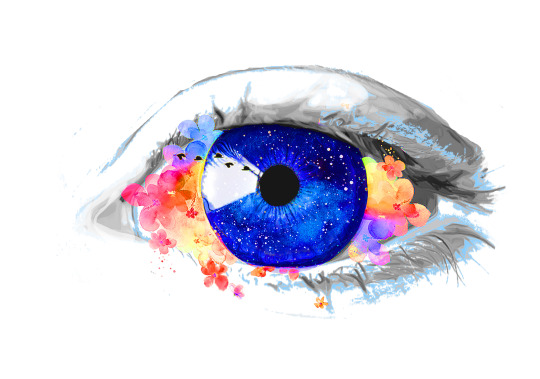
artwork Donatella Lavizzari
Mi piace pensare che si possa passare un testimone alle generazioni future.
Passare l’amore per l’Arte. Passare l’amore per la Bellezza. Passare l’amore per la Vita.
Passare il segreto per creare un rifugio, seppur piccolo, per la propria anima.
Un passaggio di valori e ideali. Così come un mentore usa tramandare la propria arte, il suo inestimabile saper fare all’allievo migliore.
‘L’arte celebra, ricorda, esalta, anticipa, spiega, idealizza.’ Dischiude nuovi mondi. L’Arte ha da sempre un grande potere. Smuove le coscienze, parla un linguaggio universale, travalica i limiti di spazio e di tempo. È salvifica.
‘La bellezza salverà il mondo’ scriveva Fëdor Dostoevskij ne ‘L’idiota’. E ripeteva che non possiamo vivere senza pane e nemmeno esistere senza bellezza.
Peppino Impastato ha combattuto affinché la gente fosse educata alla Bellezza: perché uomini e donne non si abbandonassero più alla rassegnazione ma coltivassero la curiosità e lo stupore che genera conoscenza.
Sono in molti ad aver coltivato il sogno della Bellezza come via di salvezza per un mondo che sembra dirigersi inesorabilmente verso la deriva. Un mondo alla rovescia dove si è spezzato il filo che unisce verità e bellezza. Lo stesso Cardinale Martini pubblicò la Lettera Pastorale ‘Quale Bellezza salverà il mondo?’.
Nella premessa, citando Solgenitsin, scrisse: ‘Il mondo moderno, essendosela presa contro il grande albero dell’essere, ha spezzato il ramo del vero e il ramo della bontà. Solo rimane il ramo della Bellezza, ed è questo ramo che ora dovrà assumere tutta la forza della linfa e del tronco.’ Ma cos’è la Bellezza? Estrapolarne dei parametri universali e definirla in maniera univoca risulta impossibile. Ogni periodo storico e ogni cultura ha la sua interpretazione.
Oltre alla dimensione meramente estetica ne esistono altre che attengono alla sfera emozionale, all’etica, alla sacralità,
L’origine della parola è sanscrita. Bet-El-Za vuol dire: “luogo dove Dio brilla.’ È luce, dono, armonia, amore, che permea tutte le cose. E questo mi fa riaffiorare alla mente le parole della grande poetessa Alda Merini: la bellezza è il disvelamento di una tenebra caduta e della luce che ne viene fuori.
Cos’è la bellezza per me? Difficile dirlo a parole. È come l’attrazione che nasce tra due persone. Non può essere spiegata. Esiste e basta. È come un brano che entra dentro, ti sfiora, ti accarezza, ti avvolge in un abbraccio morbido e vellutato. E tu stai lì, immobile. Ascolti, respiri, chiudi gli occhi e ti lasci andare in quell’incanto chiamato Musica.
È quel mix di gentilezza, dolcezza, onestà, determinazione e coraggio che coinvolge ogni atteggiamento, gesto ed espressione del nostro vivere quotidiano. È questo e tanto altro ancora.
Ho posto la stessa domanda ad alcuni amici, artisti dell’immagine, delle note e della parola. Ecco le loro risposte:
‘Ciao Donatella. Mi chiedi di parlare di cose troppo grandi per me. Non so cosa sia l’arte. Non l’ho mai saputo. Credo appartenga, come la bellezza, ad un’altra dimensione, parallela alla nostra, e che di tanto in tanto, attraverso qualche forellino, riesca a fuoruscire ed abbagliarci. Ne restiamo enormemente colpiti ma non riusciamo a spiegarla o descriverla a parole. Di più non saprei che dirti.’
Bruno Bozzetto – Autore, animatore, disegnatore e regista.

“Per me la Bellezza è questo Donatella. Un gesto totale, puro, pulito e soprattutto bambino. La bellezza sono i bambini e la nostra capacità di meritarceli!!! Sì, meritarci ciò che sono, che poi non è altro che ciò che eravamo tutti noi prima di dimenticarcelo. La bellezza è il mondo visto con gli occhi dei bambini, che vedono meglio dei nostri corrotti da ciò che abbiamo, dimentichi di ciò che siamo!”.
Andrea Santonastaso – autore, attore, direttore artistico e disegnatore.
‘Bellezza è ciò che apre il tuo sguardo a un sorriso.’
Nini Maria Giacomelli – Paroliere, scrittrice e autrice musicale e teatrale.
‘Il concetto di Bellezza può essere interpretato in moltissimi modi. Se penso alla Bellezza come valore oggettivo, penso all’armonia, al l’equilibrio, alla perfezione delle proporzioni. Poi esiste la Bellezza di uno sguardo, di un luogo, di una poesia, di una melodia, di un’opera d’arte. Volendo darne una definizione sostanziale, potrei dire che è qualcosa che esiste in ognuno di noi ed invade azione e pensiero. È una condizione dello spirito e viene percepita in modo differente, secondo il proprio ‘sentire’ e la propria ‘natura’. La vera Bellezza resiste al passare del tempo ed eleva verso il sublime. Tutti noi ne siamo custodi.’
Gigi Cifarelli – Chitarrista, cantante e compositore.
‘Arte e bellezza…difficile… ti potrei dire che l’arte e la bellezza sono concetti inspiegabili, legati alla sensibilità ed esperienza personali nell’atto creativo.
Che la Bellezza è più simile alla sensazione eterea di un sogno e quindi senza una vera logica ne riconducibilità alla realtà.’
Fabio Bozzetto – Video maker & digital artist.
‘La bellezza è qualcosa che innalza e fa stare bene, come un canto che diviene preghiera. La musica è bellezza. Secondo la cultura africana, la musica eleva e purifica lo spirito, celebra la vita, è un ringraziamento per tutto ciò che abbiamo e ci permette di raccontare la nostra storia alle generazioni future.’
Ranzie Mensah – Performing artist/cantante.
‘La bellezza. Onda di meraviglia che infrange lo sguardo. Cielo, mare e terra insinuandosi sin dentro i pori dell’anima. L’abbraccio tra realtà e sogno, tra ciò che è etereo e ciò che è concreto. L’amore che ti rende muto e profondo, piccolo dinanzi al sublime. La preghiera all’onnipotenza che non ha mai fine. A te mi inchino bellezza.’
Sergio Pennavaria – Poeta cantautore.
‘Ciao Donatella, la bellezza è una forza ricca di tanti fattori che riesce a scuotere i sensi e a spogliarmi della corazza che, seppur non volendo, ho eretto nell’arco della mia vita. Crescendo ho avuto consapevolezza che la bellezza ai miei occhi subisce mutamenti. Quella sfacciatamente evidente, in alcuni casi disanimata, ha ancora il potere di scuotermi ma si tratta di attimi e alla mia età perdo facilmente l’interesse. Ciò che invece non mi stanca e mi anima è quel tipo di bellezza che a volte si nasconde nelle cose semplici, che a un primo sguardo appare scontata o estremamente complessa, che richiede attenzione per essere recepita. Una bellezza in grado di aprirmi gli occhi e stapparmi le orecchie. A volte si fa respirare, toccare, è esaltazione di sensi ed emozioni. La bellezza che preferisco si manifesta attraverso certe espressioni che la natura ci regala, o sotto forma pittorica, musicale, scultorea e molto altro ancora. Quanto più io sono propensa ad accoglierla, tanto più lei si manifesta.’
Paola Atzeni – Compositrice, autrice, cantante e flautista.
‘Posto che non sarei in grado di dare una definizione univoca della bellezza, così come forse non lo sono nemmeno secoli di studi di estetica, probabilmente quella che ora mi attrae di più è una sua concezione “trasformativa”. Una idea che si manifesta ed illumina la realtà dandone una percezione differente e più consapevole dalla quale non sia possibile tornare indietro. Certamente, anche, in questa epoca storica è una necessità assoluta, al netto dell’adagio degli sciocchi per cui l’arte (chissà, non l’unica generatrice di bellezza) sarebbe un ozio, quasi un vizio e non l’unico mezzo che l’uomo ha per provare di tanto in tanto a trascendere la propria misera bestialità. Non saprei dire se la bellezza (preferirei dire l’arte) possa salvare il mondo, ma di sicuro un mondo che ne sia privo è condannato al disastro.’
Matteo Nahum – Compositore, chitarrista, arrangiatore.
‘La bellezza è respiro circolare che si fa vortice. A mano a mano che il suo incanto divora ogni attenzione, mutiamo a spettatori assoluti. La bellezza non necessita di traduzioni, parla in contemporanea tutte le lingue dell’universo, si spiega da sé. Non si priverà degli occhi, delle mani, dei passi e del pensiero che sorregge ogni bellezza, l’inconsapevole coscienza, che avvolge, sospinge, muta nell’alternanza di sé. Mi piace sentirla la bellezza, il suo odore, il suo sapore, il suo rumore, nel mio sangue. Io, che sono fatto della stessa sostanza della bellezza. Ho provato a inoltrarmi in un campo difficile. La bellezza è una di quelle entità di una semplicità disarmante, come la sua complessità. È oggettiva e tanto quanto soggettiva. In pratica va solo lasciata scorrere, senza opporre resistenza.
Giuseppe Campagna – Imprenditore e designer di gioielli.
‘La Bellezza. È una voce, un gesto, un alito di vento, un miracolo, un miraggio, un sogno, una melodia. Un’unità di misura. Un mezzo di trasporto. Una stretta di mano … sincera. É una stazione. É un porto. Un messaggio ai naviganti. È un mare in cui i terrestri dovrebbero immergersi. É un luogo in cui vorresti arrivare sempre ma da cui dovrai necessariamente ripartire. La vera bellezza è insita nell’universo. É l’esistenza dell’universo. È il nostro pianeta. Siamo noi. È la vita. È lo spazio / tempo che ci separa dai momenti insignificanti, meno belli o decisamente brutti. È ovunque, basta cercarla ma non sempre si trova in superficie. Non esiste? É una domanda. É una risposta, un punto esclamativo, un punto di vista, un termine, una virgola. È una terra promessa. É un’isola, un iceberg, un mondo, un cerchio, una costruzione, una invenzione ma anche qualcosa che non c’è più, che c’è non c’è mai stata o che non ci sarà mai. È la pelle, la polpa, il nocciolo. È un mito, un obiettivo, un traguardo. È un insieme di fattori armonici e/o sinergici. È una necessità quotidiana. Non dura? È divina, assoluta, eccitante.
Può dare dipendenza. È un fragile equilibrio. È una vibrazione. È un’emozione riconoscibile. È il massimo indispensabile. È… un gioco, una capriola, uno scherzo, 3 barattoli… una molletta…
Angelo Jelmini – Architetto/designer.
‘La Bellezza appartiene al mostruoso, quanto la sua orrida controparte. Al loro manifestarsi, nella funzione suprema di segno e ammonimento, divina armonia e abissale deformità erano entrambe insostenibili alla vista dei comuni mortali. Così dice il Mito. Come ci ricorda Martina Mazzotta, la Bellezza include la Bruttezza: se il greco Kàllos è totalizzante nell’esprimere il buono e il bello, il Pulchrum dei latini si sdoppia nell’ambiguità paretimologica del Bellum (a fronte di bellus-a-um – da cui catullianamente deriva il nostro ‘bello’ – e marciando verso un fronte bellicoso). Attenti a chiamare «Bellona» una procace passante: potreste attirare lo sdegno di una Dea della Guerra! Nella “Storia della bruttezza”, in linea con Karl Rosenkranz verso una categorizzazione estetica del Brutto, Umberto Eco sostiene provocatoriamente che l’uomo sia più attratto dall’orrido che dal Bello, chiamando in causa l’Inferno dantesco, il cui «repertorio di molteplici deformità» da sempre affascina artisti e lettori (con buona pace di Purgatorio e Paradiso). Oggi, questa brillante provocazione ha forse perso il mordente: la cosiddetta società dell’immagine ha anestetizzato la sensibilità estetica in un surplus iconico indigitabile, gettando nel bidone dell’indifferenziato Bello e Brutto, nel sintetico appiattimento di ogni codice e senso critico, miscelando con disinvoltura buono e cattivo gusto in un grigio e ignavo relativismo. Chiudono le librerie e aprono i beauty center: ma se abbiamo rinunciato alla lettura, sarà difficile leggere la Bellezza in un volto standardizzato, plastificato, da cui sono state strappate le pagine del tempo. E se il Bello appartenesse all’anima? E se l’anima fosse la forma del corpo? E se la lettura fosse nutrimento dell’anima? Allora il mondo sarebbe invaso da ‘ultracorpi zombificati’, vuoti, carenti di vitamine estetiche… Sono dubbi che ci assalgono, quando osserviamo i volti giovani e freschi di modelle e modelli (nell’intercambiabilità ‘elettroaddomesticata’ di professionisti e fai-da-te) che occhieggiano dai nostri cellulari con la stessa espressione vacua, stereotipata, senza attrattiva: come direbbe Filoteo Faros, essi hanno spostato «la foglia di fico dagli organi genitali al volto». Ma la cosa più terribile, è che questo appiattimento ha nuociuto in toto al mostruoso, mutilato d’ogni segno d’ammonimento: nel tentativo di estirpare il Brutto, la liquida società dell’immagine ha liquidato l’immagine del Bello. Alla luce di quanto detto, e parafrasando Dostoevskij, è forse azzardato affermare che, nel recupero dell’accezione sublime, «la Bruttezza salverà la Bellezza»?’
Luigi Maio – “il Musicattore” - Attore, musicista, drammaturgo, disegnatore e scenografo
#Luigi Maio il Musicattore#Andrea Santanastaso#Angelo Jelmini#Giuseppe Campagna#Nini Maria Giacomelli#bellezza#Matteo Nahum#Paola Atzeni#Sergio Pennavaria#Ranzie Mensah#Gigi Cifarelli#Bruno Bozzetto#Fabio Bozzetto#Lavizzari Donatella
0 notes
Text
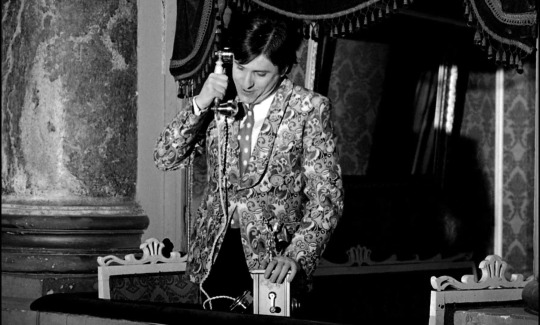


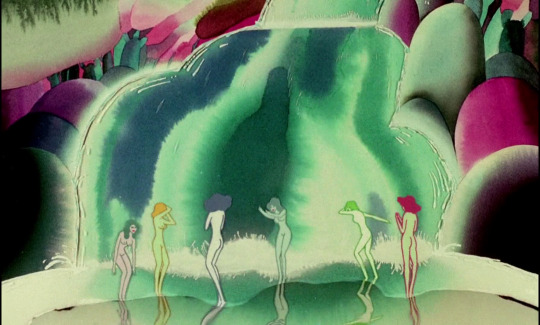

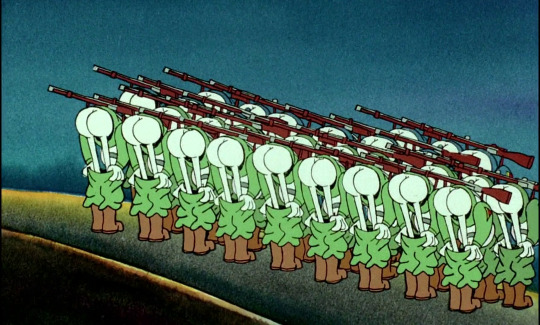

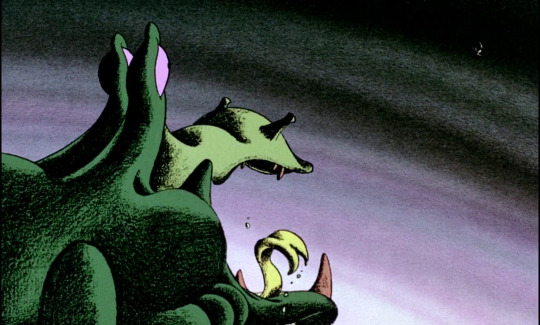
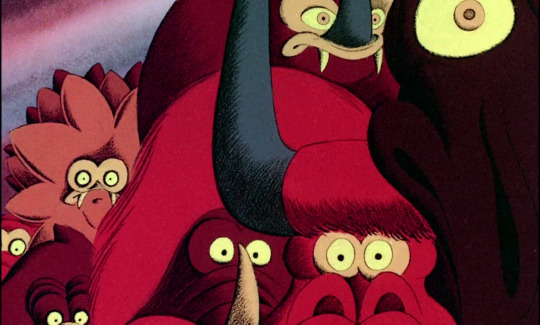
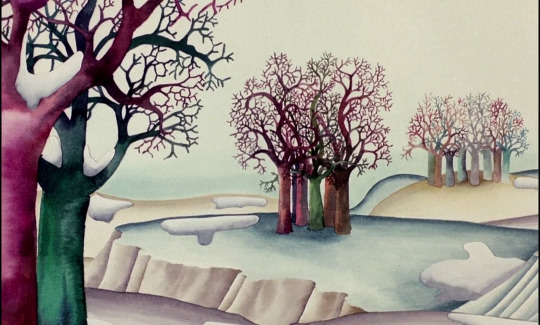
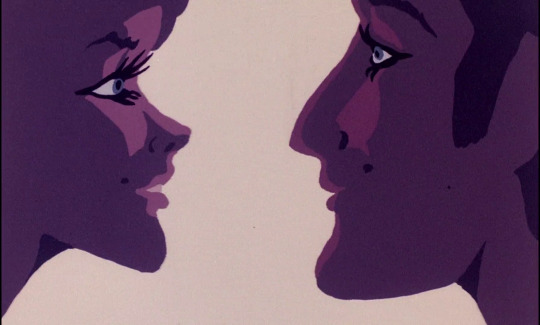
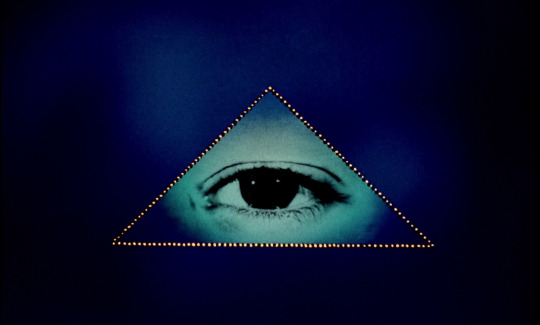
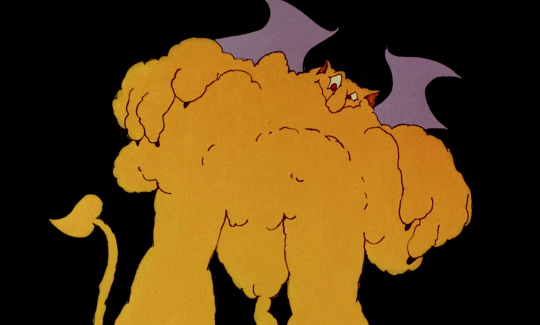

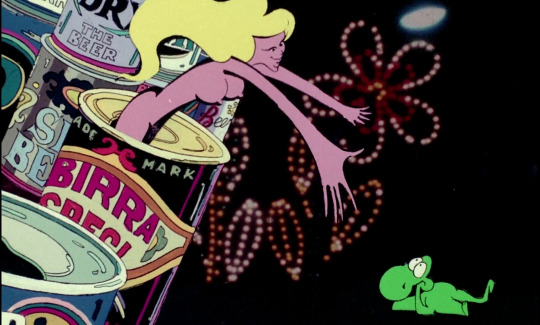
Allegro Non Troppo (1976)
#allegro non troppo#animation#animated film#musical#italian cinema#movie screencaps#film screencaps#my screencaps#my screenshots#fantasy#live action#Bruno Bozzetto#Maurizio Nichetti#Maurizio Micheli
16 notes
·
View notes
Video
Europe and Italy
Director: Bruno Bozzetto | Italy, 1999
36 notes
·
View notes
Text
BRUNO BOZZETTO INVENTED COUNTRYBALLS. HE WAS THE FIRST, WITH HIS SHORT MOVIE ITALIA VA EUROPA. HE WAS THE FIRST.
0 notes
Text
Mr Rossi looks for happiness (1976)
Mr Rossi is your average Joe who is stuck at a dead end job and is generally unhappy with his life. To cheer him up Mr Rossi's fairy godmother gives him a magical whistle that let's him travel through time. So Mr Rossi and his boss' dog travel through time to find happiness.

I don't like Mr Rossi as a character, he is meant to be this everyman that the audience can project onto but he has no agency whatsoever. I don't like how he treats the dog either, he's pretty controlling and doesn't want him to be friends with anyone but himself. I do like the point of the film though; that when or where you are won't make you happy but it's your own mindset that will make or break you. I don't know I just like how realistic that is.

Being a time travel movie it feels very segmented and honestly pretty repetitive. The limited animation works wells enough and is pleasing to the eye.
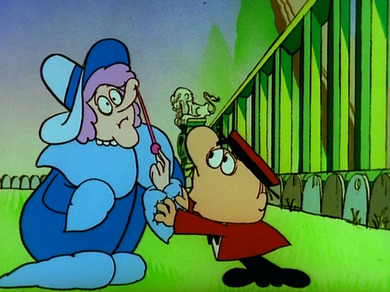
If you're interested in this movie check it out but there is a racist caricature in it just so you know.
The list
#animated movies#animation#every animated movie#animation history#1970s#70s films#1976#italian animation#german animation#bruno bozzetto film#mr rossi#mr rossi looks for happiness#hr#rsi#wagner hallig film gmbh
1 note
·
View note

